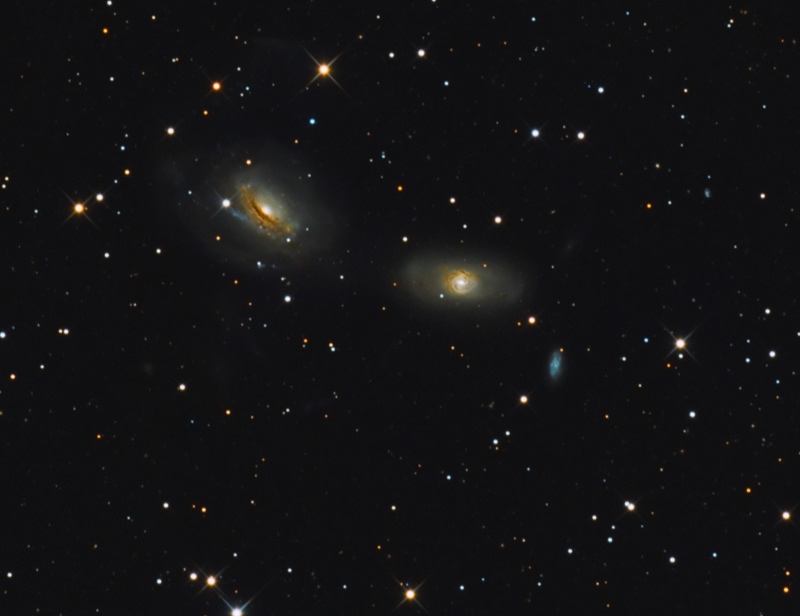NGC 3169, NGC 3166, and a small faint NGC 3165 (Jon Talbot)
NGC 3166
Alternate:PGC 29814
Sextans
RA 10h 13 m 44.9 s
Dec +03º25′ 31”
Magnitude 11.3
NGC 3169
Alternate: UGC 5525
Sextans
RA 10h 14 m 15.1 s
Dec +03º27′ 58”
Magnitude 11.5
NGC 3165
Alternate:
Sextans
RA 10h 13 m 31.4 s
Dec +03º22′ 30”
Magnitude 13.9
For this month, I am offering a challenge to those with larger telescopes. A ten-inch or greater telescope is needed, with those with eight-inch telescopes needing optimal dark conditions clean optics, and averted vision to make out this pair.
NGC 3166 and 3169 in Sextans are a gravitationally bound galactic pair, discovered by the great William Herschel in 1783. The smaller fainter NGC 3165 was discovered by William Parsons, the 3rdEarl of Rosse in 1856, using the famous Leviathan of Parsonstown 72-inch telescope.
NGC 3166 is an Sb spiral galaxy with a very small, very bright nucleus in a short smooth bar. The spiral pattern is only in the center, and there is a large very faint extended envelope.
NGC 3169 is an SaHubble classification spiral galaxy about 75 millionlight-years distant.It is an unbarred spiral galaxy with tightly-wound arms, but with a peculiar feature. There is an asymmetrical spiral arm and an extended halo around the galaxy.
NGC 3169 is located in close physical proximity to NGC 3166, and the two have an estimated separation of around 160,000 light-years. Their interaction has created a gravitational distortion that has left the disk of NGC 3166 warped, in addition to NGC 3169’s asymmetrical arm. Combined withNGC 3165, the three galaxies form a small group within the larger Leo I Group. The three galaxies are embedded within an extended ring of neutral hydrogen that is centered on NGC 3169. Astronomers feel that the interacting galaxies will eventually merge to form a single galaxy in the distant future.
For the backyard astronomer, this Cosmic trio is well within the capabilities of my 11” SCT and the contributing astrophotographer’s 130 mm apochromat refractor. As always, a dark moonless night is required, especially in locating the dimmer NGC 3165, as seen in the accompanying photo.
